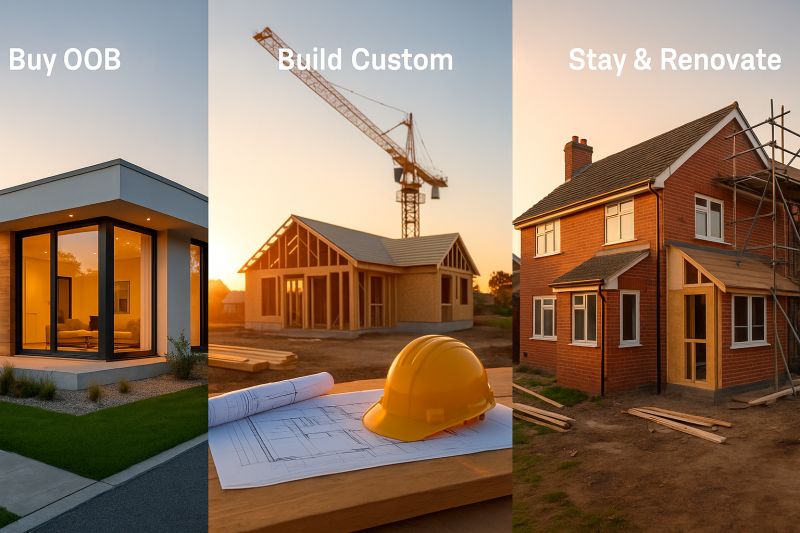One cold January morning, I boarded the VIA Rail from Ottawa to Montreal. Laptop open, prepping for a major transformation.
🏡 “We toured dozens of homes, but nothing fit our needs. We decided to design our dream house and build on a lot my father-in-law gave us in Kanata.”
🏖️ “Jane and I downsized last year. We bought a move-in-ready condo in Laval by the water. It’s perfect for retirement.”
🔨 “We thought about moving many times. We bought our house years ago, before Jessy was born. The place feels smaller now but we can’t afford to move. We plan to stay and add a room above the garage for her.”
I listened with interest.
👩💼 I refrained from adding that I too was eyeing an off-plan condo in Montreal as investment. In transformation, that’s like betting on emerging tech. The structure isn’t built yet, but you’re staking a claim in tomorrow’s neighborhood.
And just like in real estate, businesses must decide:
• Buy out-of-the-box (OOB)?
• Build custom?
• Or renovate legacy?
The Economics
OOB (move-in-ready)
✅ Fast time-to-value
✅ Predictable, proven
✅ ~60% lower cost if you avoid customization
⚠️ Limited flexibility
⚠️ Vendor lock-in (like leased land without the deed)
Custom Build (new house)
✅ Tailored to exact needs
✅ Future-proof for growth
⚠️ 40–60% cost overruns, 6–12 month delays (Gartner)
⚠️ In-house inexperience magnifies risk
Renovate Legacy (old house)
✅ Lower upfront cost
✅ Familiarity
⚠️ Structural issues resurface
⚠️ Disruption without true transformation
Governance = Make-or-Break
If buying → use a trusted broker (procurement) and involve stakeholders early.
If building → align the blueprint with everyone who must “live in the house.”
⚠️ Political reality: Finance wants cost control. Ops wants minimal disruption. Sales wants advantage. IT wants elegance. Without one empowered decision-maker, you end up with a house nobody wants to live in.
The Hidden Killers
• Over-customizing OOB → costs spiral
• Changing blueprints mid-build → risks multiply
• Carrying legacy too long → double drain on time + money
• Underestimating migration → adoption costs can hit 30%
The Human Factor
• Expect resistance: people miss the familiar, even if broken
• Declutter: don’t migrate clutter or inefficiencies.
• Orient: teams need time to learn the new neighborhood
• Measure adoption, not just deployment
• Fix quickly: early wins build trust
That train ride reminded me: whether you build, buy, or stay—the real differentiator is foresight, discipline, and patience to make the right move and end up in a house you’re proud to call home.



